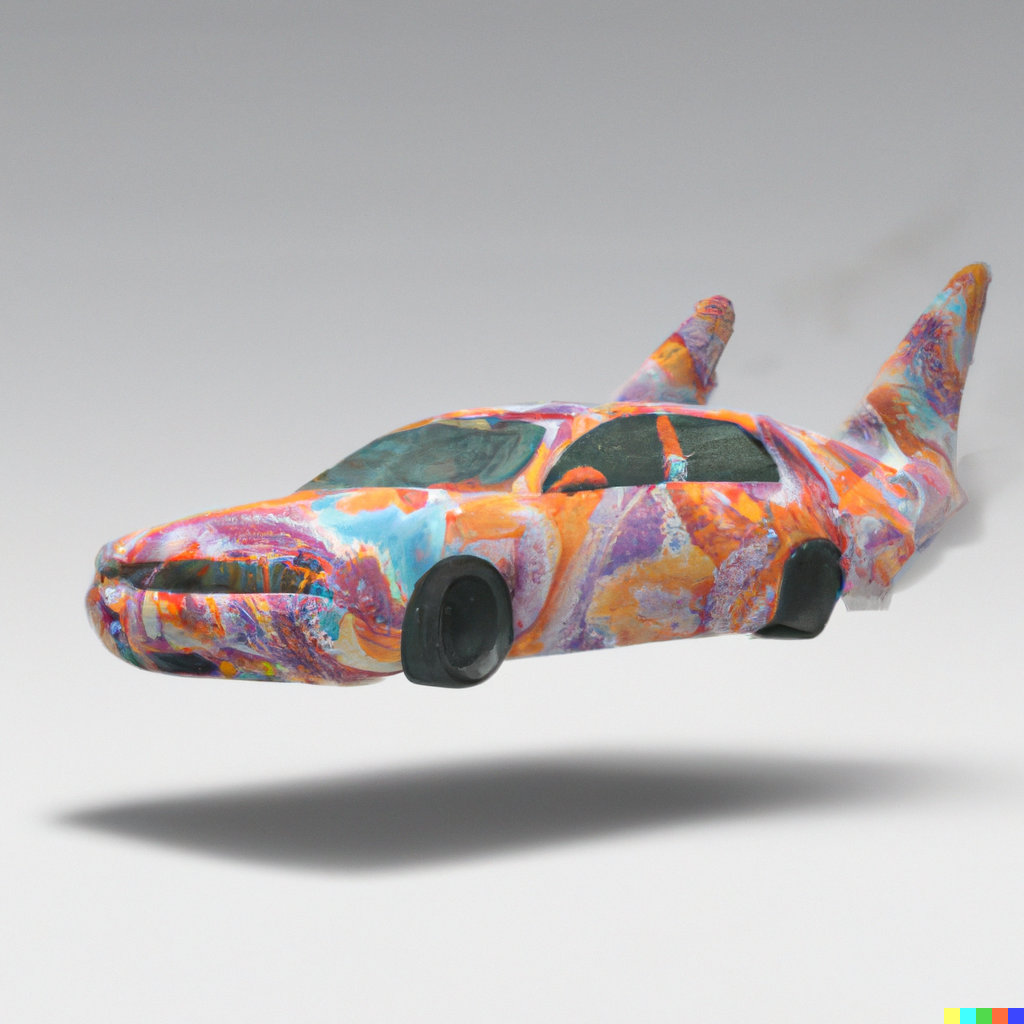Hit enter to search
The History of Flying Cars
The History of Flying Cars
Flying cars have long captured human imagination, serving as symbols of a future where technology has bridged the realms of land and sky. While they might seem like recent innovations, the concept of flying cars has deep historical roots. This article will trace the history of these marvelous machines, showcasing major milestones and technological advancements.
Early History and the history of flying cars
The fascination with flying cars predates the automobile and even the powered airplane, with its roots interlaced with humanity's earliest dreams of flight and mobility. Before the dawn of the 20th century, the concept of a vehicle capable of traversing both land and air was already a fixture of human imagination, often found in the pages of fiction and the blueprints of visionaries.
Mythology and Early Literature:
The seeds of the flying car concept can be traced back to ancient mythology and early literature, where magical chariots and flying carpets carried heroes and deities across the heavens. These stories reflect a primal desire for a vehicle that could overcome the constraints of the earthbound human experience taking flight.
Leonardo da Vinci’s Aerial Screw:
In the 15th century, Leonardo da Vinci, the quintessential Renaissance man, sketched the design for the "Aerial Screw," which some historians view as an early precursor to the helicopter. While not a car by any stretch, this invention showcases the period's ingenuity and longing for vehicles that could ascend into the sky.
Jules Verne’s Influence:
The 19th century brought with it a surge of interest in science and technology, captured vividly in the works of authors like Jules Verne. In novels such as "Master of the World," Verne depicted fantastical vehicles that could travel on land, dive underwater, and fly through the air, capturing the imagination of the public and setting the stage for future conceptions of multi-terrain vehicles.
19th Century Science and Airships:
During the 19th century, the development of lighter-than-air travel with balloons and airships offered a glimpse into the possibility of aerial navigation. While these were not cars, per se, they ignited the idea that personal conveyance need not be limited to the ground and that the sky was a new frontier for transport.
Steam-Powered Road Vehicles:
The advent of steam-powered road vehicles in the 18th and 19th centuries, such as the ones developed by Nicolas-Joseph Cugnot and Richard Trevithick, demonstrated the potential for mechanical personal transport, setting a foundation upon which the idea of a roadable aircraft could later be built.
Early Science Fiction and Public Imagination:
The genre of science fiction blossomed in the late 19th century, with authors like H.G. Wells exploring the concept of advanced, often flying vehicles in their narratives. These works further embedded the idea of flying cars into the collective consciousness.
Patents and Conceptual Designs:
In the late 1800s, as technology progressed, inventors began to file patents for various flying machines, some of which included concepts for vehicles that could operate both on roads and in the sky. While none of these early designs came to fruition, they represent the first concrete steps towards the flying cars we conceptualize today.
In essence, the period leading up to the 20th century was rich with early ideas of flying cars, encapsulating the convergence of myth, literature, invention, and early science fiction. These ideas laid the imaginative and technical groundwork for the earnest attempts at creating flying cars that would follow in the next century.

Early Beginnings: 1900s – 1950s
The concept of flying cars stretches back to the dawn of the 20th century, where the rapid progression of technology in both the automotive and aeronautical fields spurred imaginative minds to dream of a vehicle that could traverse both the open road and the boundless sky. The period from the 1900s to the 1950s represents a time of ambitious experimentation and significant milestones in the quest to develop such a machine.
In the 1920s, the landscape of aviation was brimming with new developments, and it was in this era that Glenn Curtiss, an esteemed figure in the world of aviation, turned his attention to the possibility of a car that could fly. Curtiss, already well-known for his contributions to aviation, introduced the Curtiss Autoplane in 1926. This vehicle was equipped with a fuselage akin to that of an airplane, complete with wings and a propeller. While it was a remarkable endeavor, the Autoplane fell short of true flight, managing only to lift off for brief hops. Despite this, it laid important groundwork for the first concept of of a roadable aircraft and is often celebrated as a pioneer among flying cars.
The late 1930s witnessed another significant development with the unveiling of Waldo Waterman's Aerobile in 1937. Waterman, an inventor with a keen interest in the intersection of driving and flight, created what could be considered one of the first functional prototypes of a flying car. The Aerobile was a striking innovation, with folding wings, that could be detached, allowing it to operate as a flying car designed for on the ground. This convertible nature was a practical solution to the dual-use problem and represented a leap forward in the design of flying cars. The Aerobile was a testament to the era's technological advancements and the enduring human aspiration to create a vehicle that could seamlessly transition from road travel to air travel.
These early experiments were foundational in the evolution of flying cars, reflecting the era's visionary spirit and the relentless pursuit of a future where the boundaries between driving and flying would be indistinguishably blended. Despite the technological limitations of the time, these pioneers laid the groundwork for the continuous exploration of flying cars, which would progress into more sophisticated attempts successful flight as the century wore on.
The Consolidated Vultee Aircraft Company
The Consolidated Vultee Aircraft Corporation, also known as Convair, played a significant role in the aviation industry, particularly during the mid-20th century. Formed in 1943 through the merger of Consolidated Aircraft and Vultee Aircraft, Convair quickly became a major aerospace contractor, contributing significantly to both military and commercial aviation. Although not directly involved in the development of flying cars, their advancements in aircraft design and technology were influential in the broader context of aeronautics, which indirectly impacted the realm of flying cars.
Convair's legacy includes the development of several iconic aircraft. One of their most notable creations was the B-36 Peacemaker, a strategic bomber used by the United States Air Force. This aircraft held the distinction of being the largest piston-engine aircraft ever built and was a key component of the U.S.'s strategic bombing capabilities during the early Cold War era. In addition to military aircraft, Convair also ventured into commercial aviation with the Convair 880 and 990 airliners, which, though not as commercially successful as their competitors, were renowned for their advanced aerodynamics and speed.
The company's exploration into jet and rocket technology, particularly with the development of the Atlas missile, positioned them as a key player in the early stages of the space race. Their work in this area laid crucial technological foundations that would later influence various aspects of aerospace engineering, and civil aviation authority including concepts related to vertical take-off and landing (VTOL) — a technology central to many modern flying car designs.
While Convair did not directly design or produce a flying car, their innovations in aerodynamics, aircraft design, and propulsion systems contributed to the pool of knowledge and technology that would eventually enable the development of flying cars. Their legacy in aviation and aerospace underscores the interconnectedness of various sectors of the aerospace industry in advancing the collective dream of flight, whether it be through traditional aircraft or the more novel concept of roadable aircraft.
The Dream Soars: 1960s – 1980s
The decades spanning the 1960s to the 1980s were an exciting era for flying car development, marked by audacious endeavors and technological innovations that promised to bring the dream closer to reality. This period saw a surge in the number of inventors and engineers who dared to tackle the complexities of combining the automobile with the aircraft.
In the 1960s, the concept of personal aviation gained traction, inspired by the advancements in space exploration and the burgeoning technology of the era. It was a time characterized by a collective fascination with the near future, of transportation, and flying cars were emblematic of this futuristic vision.
By the 1970s, the dream of a flying car continued to inspire, leading to the creation of the AVE Mizar in 1973. This ambitious project was the brainchild of Advanced Vehicle Engineers, who envisioned a hybrid that married the utility of a road vehicle with the freedom of an aircraft. They chose the Ford Pinto, a compact car, as the base for their prototype, attaching it to the airframe of a Cessna Skymaster, a plane known for its unique twin-engine configuration. The Mizar was designed to drive on the road and then, with the addition of its aircraft components, take to the skies. However, the dream was cut short when, during a test flight, the Mizar suffered a catastrophic failure, leading to a crash that ended the lives of its pilot and inventor. The incident cast a shadow over the pursuit of flying cars and underscored the immense challenges inherent in such a venture.
Despite the setbacks, the dream persevered into the 1980s with Dr. Paul Moller's pursuit of the Moller Skycar. Dr. Moller, a professor of aeronautics with a vision of revolutionizing personal transport, invested decades into the development of the Skycar. His design was notable for its VTOL capabilities, which meant it could ascend and descend vertically like a helicopter — a significant engineering feat that could eliminate the need for runways. The Skycar was an advanced concept that promised a new dimension of mobility, integrating sophisticated aerodynamics, materials, and control systems. It captured the imagination of the public and the media alike; however, despite its compelling prototypes and the media fanfare they generated, the Skycar struggled to transition from experimental vehicle to commercially available product. The technological hurdles, regulatory challenges, and substantial financial investment required meant that Dr. Moller's Skycar remained just out of reach for the consumer market.
This era of flying car development was emblematic of the enduring human desire to break free from terrestrial constraints and redefine the very nature of personal transportation. The successes were few, but the lessons learned from the efforts of this time would prove invaluable for future generations of dreamers and engineers.
The Dawn of a New Era: 1990s – 2010s
The close of the 20th century and the dawn of the 21st heralded a renewed vigor in the quest for flying cars, as rapid advancements in technology provided fresh impetus for innovators in this field. This era was characterized by significant strides towards making flying cars more practical and closer to mainstream reality.
The 1990s saw burgeoning interest in integrating emerging technologies such as lightweight materials, computer-aided design, and advances in propulsion systems. This decade laid the groundwork for the successes that would soon follow, as dreamers of the past became the innovators of the future, leveraging the technological leaps of the digital age.
As the first flight of the new millennium unfolded, the dream of personal air travel was reignited with the advent of the Terrafugia Transition in 2009. This vehicle made a splash in the flying car landscape as a dual-mode, street-legal airplane with foldable wings, designed to fit within the confines of a standard car garage and be operable on public roads and airspaces. Its development represented a tangible step towards the practical application of flying cars, and it signaled a shift from experimental prototypes to vehicles that could navigate the existing transportation infrastructure.
The 2010s witnessed an explosion of interest and development in the sector, fueled by breakthroughs in drone technology and electric propulsion systems, which proved to be game-changers. These advancements enabled more compact, efficient, and environmentally friendly designs, which were essential for the viability of flying cars in urban environments.
During this time, companies such as AeroMobil and PAL-V (Personal Air and Land Vehicle) made headlines with their working prototypes. AeroMobil's flying car prototype was lauded for its sleek design, aerodynamic elements and the ability to transition between car and aircraft in less than three minutes, showcasing a level of sophistication and integration that was previously unattainable. On the other hand, PAL-V's gyrocopter-based design focused on stability and ease of flight, appealing to those who were interested in a flying vehicle with a smaller learning curve.
These companies did not just present prototypes but aimed for full regulatory compliance, working closely with federal aviation administration and automotive authorities to meet stringent safety standards. The vision was no longer just to create a vehicle that could fly and drive but to produce a vehicle that could do both safely and legally in multiple jurisdictions.
The period from the 1990s to the 2010s was marked first flying car by significant progress, shifting the conversation from whether flying cars were possible to how they could be integrated into the broader transportation ecosystem. This era set the stage for the next wave of innovation, where flying cars would begin to emerge not just as a novelty but as a viable component of the future of transportation.

The Present and Beyond: 2020s
Entering the 2020s, the flying car industry has transitioned from the realm of imagination and prototyping to tangible advancements and impending commercialization. The concept of aero car has evolved to embrace electric vertical take-off and landing (eVTOL) vehicles as the frontrunners of this transformation, leveraging electric power to offer a cleaner, quieter, and more efficient mode of aerial transport.
eVTOLs are attracting significant investment and interest from a wide range of players. Major technology and automotive companies, including industry giants like Uber and Hyundai, have invested considerable resources into developing eVTOL platforms. Uber, for instance, has been working on Uber Air, aiming to establish a network of small, electric aircraft in numerous cities to provide a ridesharing service in the sky. Hyundai has also joined the fray, announcing partnerships to develop their own eVTOLs, which are envisioned to be not just vehicles but integral components of urban mobility.
Artificial intelligence (AI) is poised to be a cornerstone in the operation of these vehicles. AI's potential to manage complex tasks in real-time makes it ideal for piloting these sophisticated machines, offering possibilities for autonomous flight that could revolutionize personal and public transportation. The implementation of AI aims to ensure test flights have the highest safety standards by reducing human error and managing the expected increase in air traffic as flying cars become more widespread. Moreover, AI could enable efficient route planning, traffic decongestion, and predictive maintenance, making flying cars smarter and more reliable.
The question of infrastructure is also being addressed, with the concept of vertiports emerging as a viable solution to the logistical challenge of where these vehicles will take off and land. Vertiports are essentially the airports for eVTOLs, equipped with the necessary facilities for charging, maintenance, and passenger processing. Cities around the world are exploring the integration of vertiports into their urban landscapes, with some aiming to be early adopters of this new wave of transportation.
All these developments are converging to bring the flying car industry to a pivotal moment in its history. With companies nearing commercial launches, the next few years could see eVTOLs becoming a common sight in our skies, offering a new dimension to urban mobility and potentially changing the way we think about personal transportation. The synergy between technological innovation, commercial success, investment, and infrastructure development is creating a fertile ground for the flying car dream to finally take flight and become an integral part of our everyday lives.
In conclusion, the journey of flying cars, from fantastical dreams to tangible reality, is a testament to human ingenuity and perseverance. With continued technological advancements and growing global interest, it's only a matter of time before flying cars become an integral part of our daily lives. As we stand on the brink of this new era, one can't help but marvel at how far we've come and dream about the limitless possibilities the future of flying tests holds.


